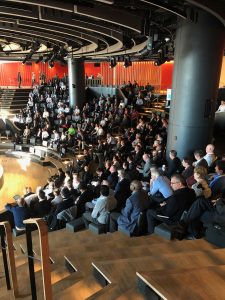Access networks come in many flavors, and represent the “last mile” of a network’s infrastructure, connecting the core network out to homes and businesses – although they’re almost never a linear mile, and almost always require more than a mile’s worth of materials to build.
Of the access network types, there’s twisted copper pair, used in telephone networks, and the advanced technologies that built upon it, like Digital Subscriber Line (DSL) and its many manifestations (ADSL, VDSL2, G.Fast and XG-FAST). Then there are the fiber-fed networks, like “the PONs,” for Passive Optical Networks, like Ethernet PON (EPON) and Gigabit PON (GPON). In traditional hybrid-fiber coax networks, the access method used to move IP-based traffic is DOCSIS, for the Data Over Cable Service Interface Specification.
Broadband gateways and related gear built with RDK started out with DOCSIS as the initial broadband access technology. But as service providers expanded, both geographically and topologically, it made sense for devices built for RDK to also expand, in terms of supporting additional access networks. It started with EPON, in 2017. An EPON “agent” software component and an associated hardware abstraction layer, or “HAL,” was created to separate the common software of RDK/Broadband from the EPON code used in individual SoCs (System on a Chip).
In the fullness of time, the RDK stack is resourced and roadmapped to host a suite of access network agents, in a modular and open sourced way, that can be mixed and matched as needed by service provider: Maybe one footprint needs DOCSIS, and another needs DSL, or EPON, or GPON. Each agent contains the interface between the core RDK code, and the SoC code that supports the wide area network technology.
Notably, the core RDK stack remains unchanged regardless of the broadband access network it supports. Only the access network agent – be it for cable modems, Ethernet, DSL, etc – changes, as needed. This also means that the same device management, logging, telemetry and provisioning software is used in all implementations (including video devices running RDK.) That’s deliberate, so that service providers have one cloud management layer for all customer premises equipment / CPE, from all manufacturers.
Ultimately, it’s a good thing: Multiple types of access networks are the rule these days, not the exception. So as the RDK stack evolves, know that an important part of it will be about making sure the RDK can serve DOCSIS, DSL and PON-styled access infrastructure.



